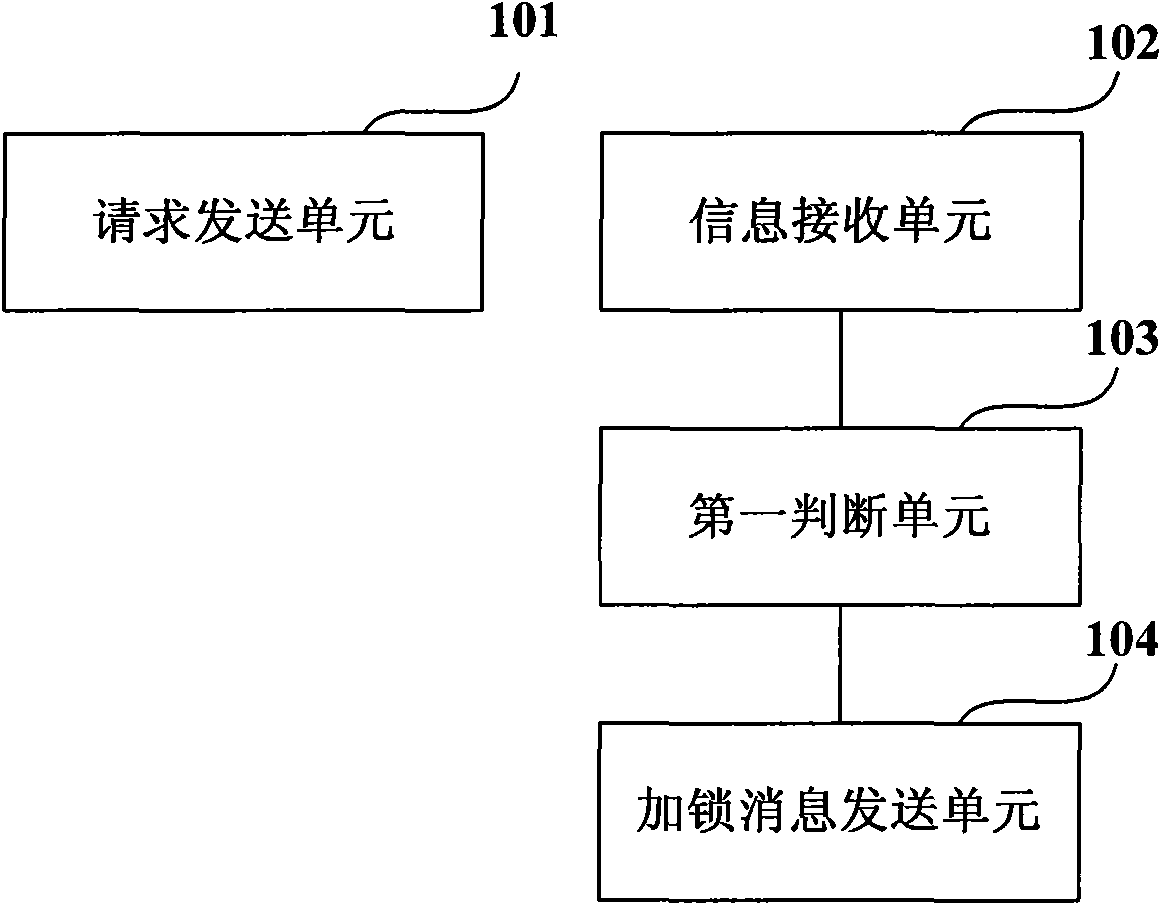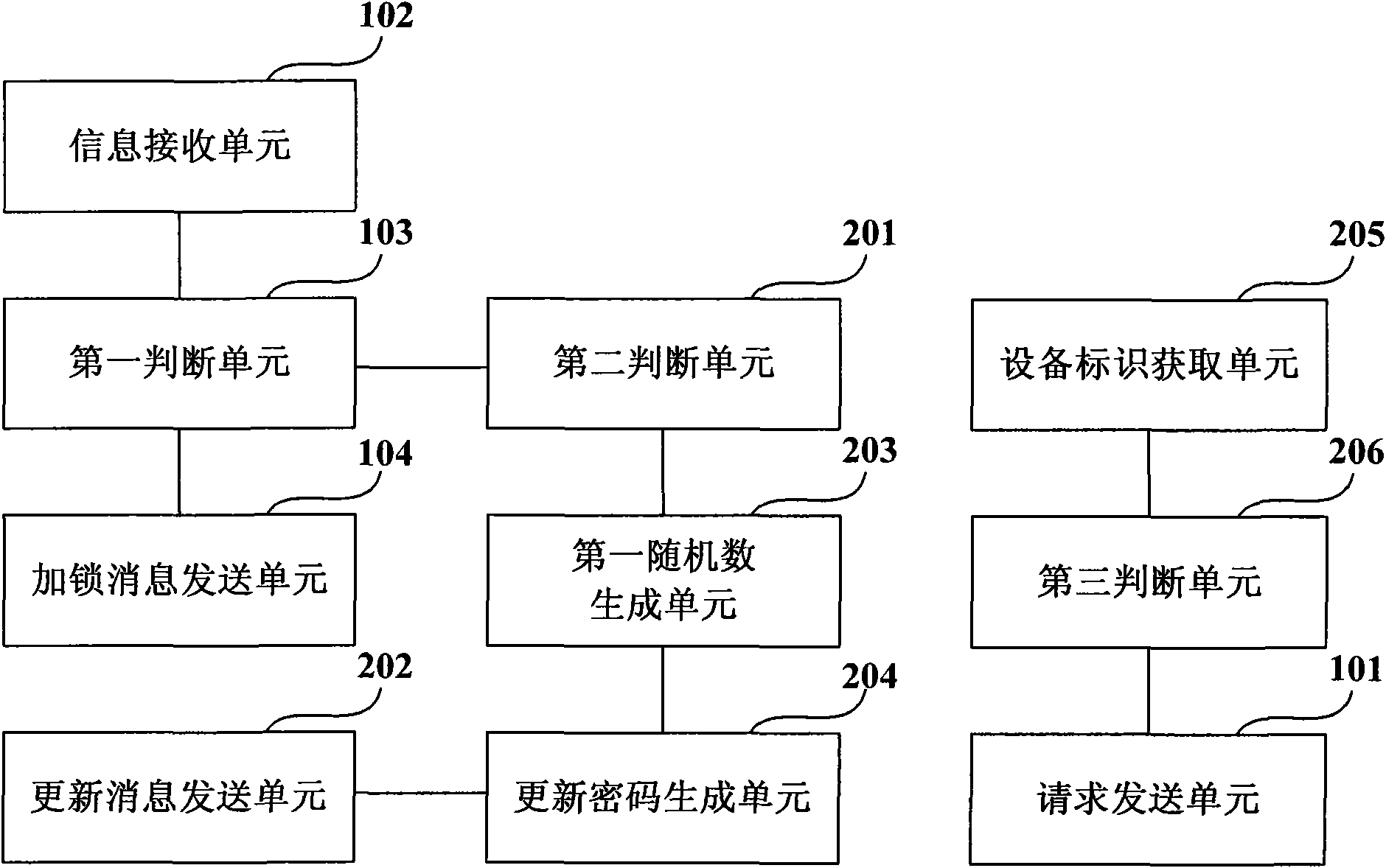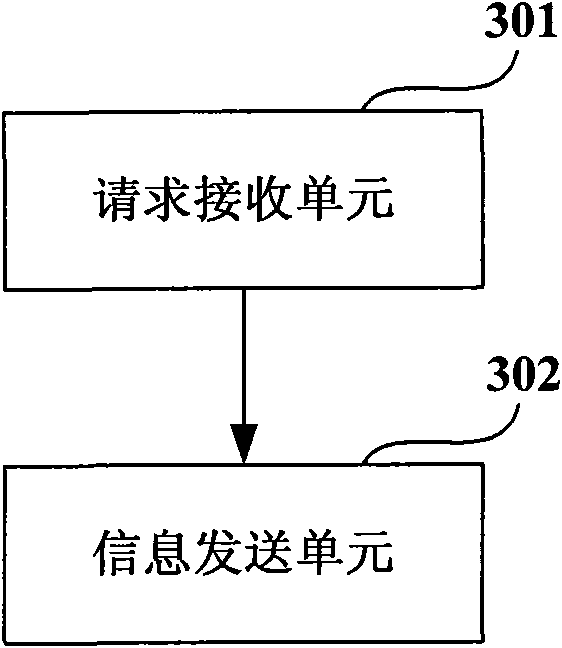Locking method, unlocking method and device thereof, network equipment and communication terminal
A technology for communication terminals and locking information, which is applied in wireless communication, security devices, electrical components, etc., can solve the problems of inability to change the PLMNID of the data card, increase costs, and inconvenience operators and end users, so as to enhance competitiveness and save The effect of cost and simple implementation
- Summary
- Abstract
- Description
- Claims
- Application Information
AI Technical Summary
Problems solved by technology
Method used
Image
Examples
Embodiment Construction
[0048] In order to make the purpose, technical solutions and advantages of the embodiments of the present invention more clear, the embodiments of the present invention will be further described in detail below in conjunction with the accompanying drawings. Here, the exemplary embodiments and descriptions of the present invention are used to explain the present invention, but not to limit the present invention.
[0049] An embodiment of a locking device provided by the present invention, such as figure 1As shown, the locking device includes a request sending unit 101, an information receiving unit 102, a first judging unit 103 and a locking message sending unit 104; wherein, the request sending unit 101 is used to send a locking query request to a communication terminal; the information receiving unit 102 is used to receive the current locking information returned by the communication terminal according to the query request, the current locking information includes a status id...
PUM
 Login to View More
Login to View More Abstract
Description
Claims
Application Information
 Login to View More
Login to View More - R&D
- Intellectual Property
- Life Sciences
- Materials
- Tech Scout
- Unparalleled Data Quality
- Higher Quality Content
- 60% Fewer Hallucinations
Browse by: Latest US Patents, China's latest patents, Technical Efficacy Thesaurus, Application Domain, Technology Topic, Popular Technical Reports.
© 2025 PatSnap. All rights reserved.Legal|Privacy policy|Modern Slavery Act Transparency Statement|Sitemap|About US| Contact US: help@patsnap.com



